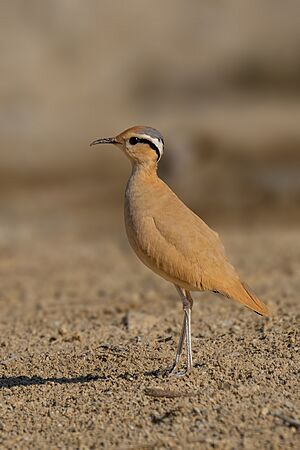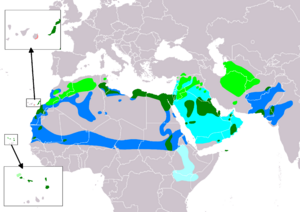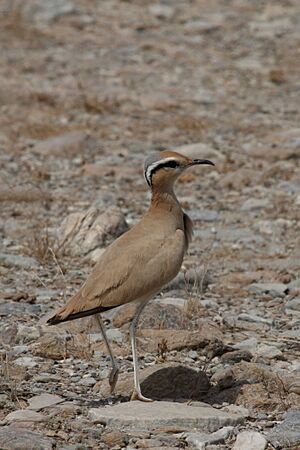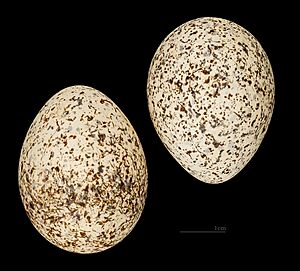Cream-colored courser facts for kids
Quick facts for kids Cream-colored courser |
|
|---|---|
 |
|
| from Egypt | |
| Conservation status | |
| Scientific classification | |
| Genus: |
Cursorius
|
| Species: |
cursor
|
 |
|
| Range of C. cursor Breeding Resident Non-breeding Passage Probably extinct Possibly Extant (resident) Possibly Extant (non-breeding) | |

The cream-colored courser (Cursorius cursor) is a cool bird that loves to run! It's part of the pratincole and courser family, called Glareolidae. Its scientific name, Cursorius cursor, comes from a Latin word meaning "runner." This is perfect because these birds often run on the ground to find their food. They mostly eat insects. You can find them in dry, open areas like deserts and semi-deserts in the Middle East and northern Africa.
Contents
Where Do Cream-Colored Coursers Live?
These amazing birds live in many places. You can find them in the Canary Islands, Cape Verde, North Africa, and Southwest Asia. They lay their two eggs right on the ground in a small scrape.
Breeding and Migration
Cream-colored coursers usually breed from February to September. But if there's enough rain, they might also breed in autumn or winter! Some of these birds are migratory. This means they travel to warmer places for winter. Birds from the north and northwest often fly to India, the Arabian Peninsula, and the southern edge of the Sahara desert. Some even breed in the desert areas of northwestern India and Pakistan.
It's rare to see them far north of their usual homes. But sometimes, a cream-colored courser has been spotted as far away as Finland, Ireland, and Great Britain!
What Do Cream-Colored Coursers Look Like?
These birds are quite special to look at. They have long legs, which are great for running! They also have long wings and a bill that curves slightly downwards.
Colors and Markings
Their body feathers are a sandy color. This helps them blend in with the desert ground. Their lower belly is almost white. When they fly, you'll see that the main feathers on their upper wings and their underwings are black. They have a grey cap on their head and neck. You can also spot a black stripe across their eyes and a white stripe just above it.
When a cream-colored courser flies, it looks a bit like a pratincole. They have relaxed wingbeats, pointed wings, and those dark underwings.
Types of Cream-Colored Coursers
There are three different types, or subspecies, of the cream-colored courser:
- C. c. cursor: This type lives in the Canary Islands, North Africa, and the Arabian Peninsula all the way to Iraq. It was first described by Latham in 1787.
- C. c. bogolubovi: You can find this type from southeast Turkey to Iran, Afghanistan, South Pakistan, and northwestern India. Zarudny described it in 1885.
- C. c. exsul: This type lives on the Cape Verde Islands. Hartert described it in 1920.



